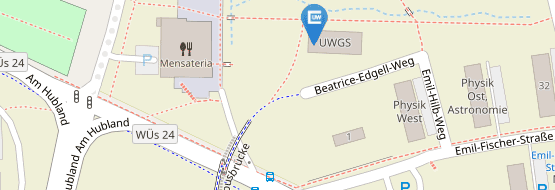Calvo Tello, José
Dissertation topic:
"Computational Analysis of Spanish Prose Genres between 1880 and 1939."
Congratulations on passing the colloquium
on 17 September 2020.
Contact address at the University of Würzburg:
Institute of German Philology
Chair of German Philology
Am Hubland - 97074 Würzburg
First supervisor: Prof. Dr Christof Schöch (Univ. Trier)
Second supervisors:
Prof. Dr Angela Schrott (Univ. Kassel)
Class in the Graduate School: "Philosophy, Languages, Arts"
Doctorate in the Graduate School from SS 2016.
Abstract:
Between the end of the 19th century and the end of the Spanish Civil War in 1939, the so-called Silver Age (Edad de Plata) emerged in Spanish art. An aesthetic generational change took place in the literature of this era: Many of the representational devices of the realistic and naturalistic novel were abandoned and new forms of expression were discovered. The works in question are classified and described by literary historians in a highly controversial manner.
The subject of this study are the works labelled by literary history as literary prose texts that were written in Spain by Spanish authors and published between 1880 and 1939. In total, the collection of texts will include around 200 works.
The aim of the study is therefore to use computer-aided methods to answer the following questions: How did the subgenres of the Spanish novel and shorter narrative prose develop between 1880 and 1939? Which stylistic features and which linguistic levels (morphology, syntax, lexis, semantics or text) prove useful for analysing the literary prose genres of this period?
The topic can be approached from two different perspectives. On the one hand, by starting from hypotheses of literary history (e.g. genre terms) and trying to check whether they can be quantitatively proven or disproven. This raises further questions:
- Literary history has developed numerous imprecise terms for subgenres of the prose of this period (auto ficción, novela lírica, novela dialogada, novela de tesis, novela poema are considered examples). Even the authors invented terms to name some of their works, such as Unamuno's nivolas, Azorín's novela impresionista, Serna's greguerías or Baroja's novela de aventuras. Do texts published under a common genre designation or labelled with such a common designation have coherent stylistic characteristics (independent of authorial style), and if so, what are they?
First, without recourse to literary theories, start from the stylistic features and apply unsupervised computerised methods developed in recent years:
- Which stylistic features lead to which groups of texts, and how do these correlate with metadata regarding the author (period, aesthetic group), the texts (setting or era in which the action takes place) or the protagonists (gender, social class)?
- Which of these groups have already been covered by traditional concepts of genre in literary history? Which could be considered innovative proposals of genres of this epoch?
After the compilation of the corpus, the texts will be automatically annotated linguistically by Natural Language Processing tools in order to work with specific morphological, syntactic, lexical and semantic information. For the first perspective mentioned above, supervised machine learning methods and constrastive analysis are used. For the second perspective, unsupervised methods such as distance measures or principal component analysis are used.






